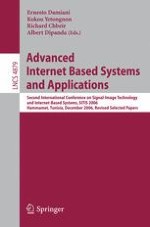In recent years, Internet-based systems and applications have become pervasive and have been the focus of many ongoing research efforts. They range from semi-structured information, to multimedia systems and applications, to P2P and ad hoc information sharing networks and service-centric systems and applications. This book p- sents a collection of articles from the best papers presented at the SITIS 2006 International Conference, aiming to cover recent advanced research on distributed information systems, including both theoretical and applied solutions. This volume is designed for a professional audience practitioners and researchers in industry. It is also suitable as a reference or secondary text for advanced-level students in computer science and engineering. The articles in this book are a selection of papers presented at the IMRT and WITDS tracks of the international SITIS 2006 conference. The authors were asked to revise and extend their contributions to take into account the comments and discussions made at the conference. A large number of high-quality papers were submitted to SITIS 2006, demonstrating the growing interest of the - search community for Internet-Based and multimedia information systems. We would like to acknowledge the hard work and dedication of many people. Our deepest gratitude goes to the authors who contributed their work. We appreciate the diligent work of the SITIS Committee members. We are grateful for the help, support and patience of the LNCS publishing team. Finally, thanks to Iwayan Wikacsana for his invaluable help. February 2007 Ernesto Damiani Kokou Yetongnon Richard Chbeir Albert Dipanda
